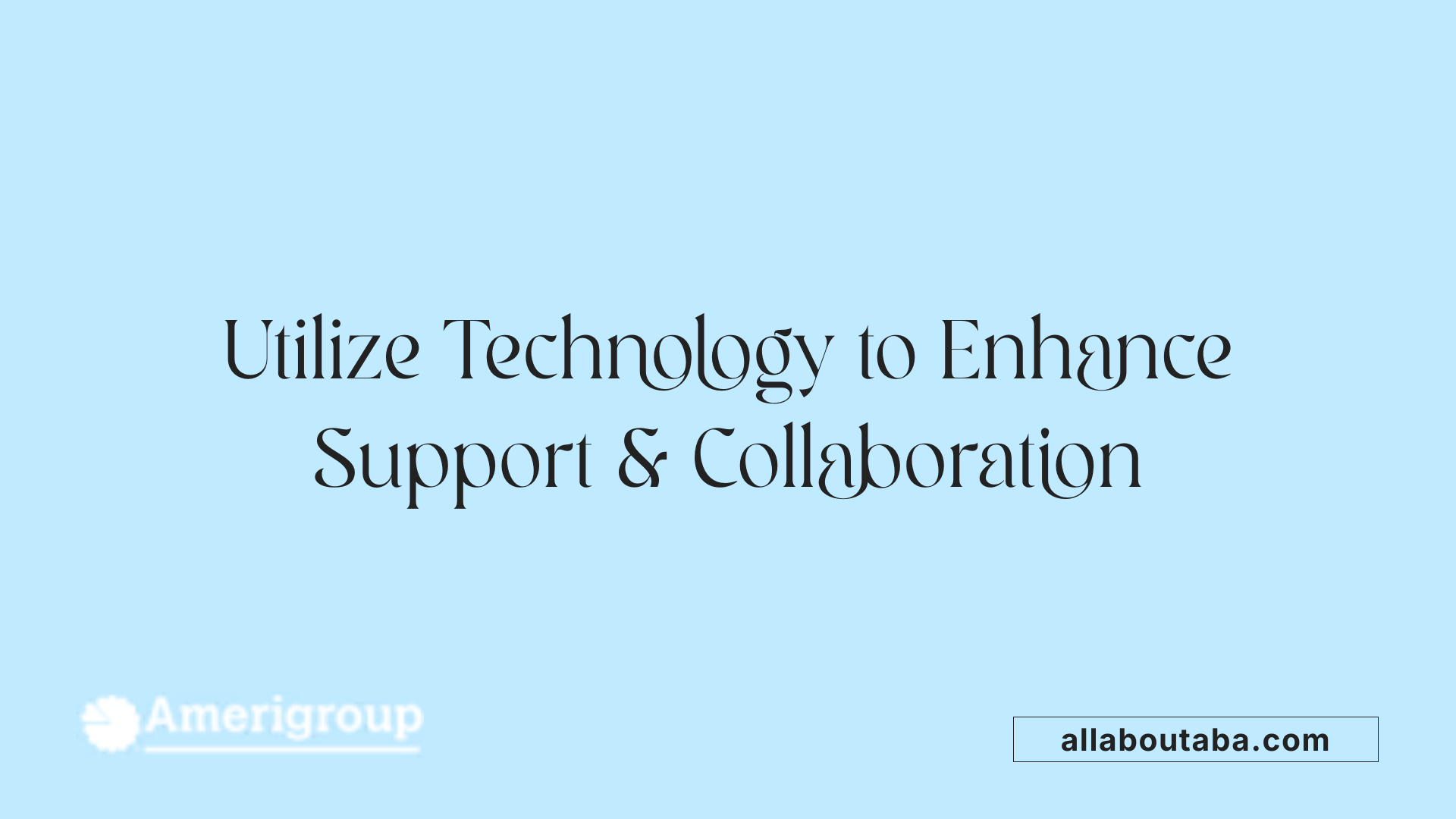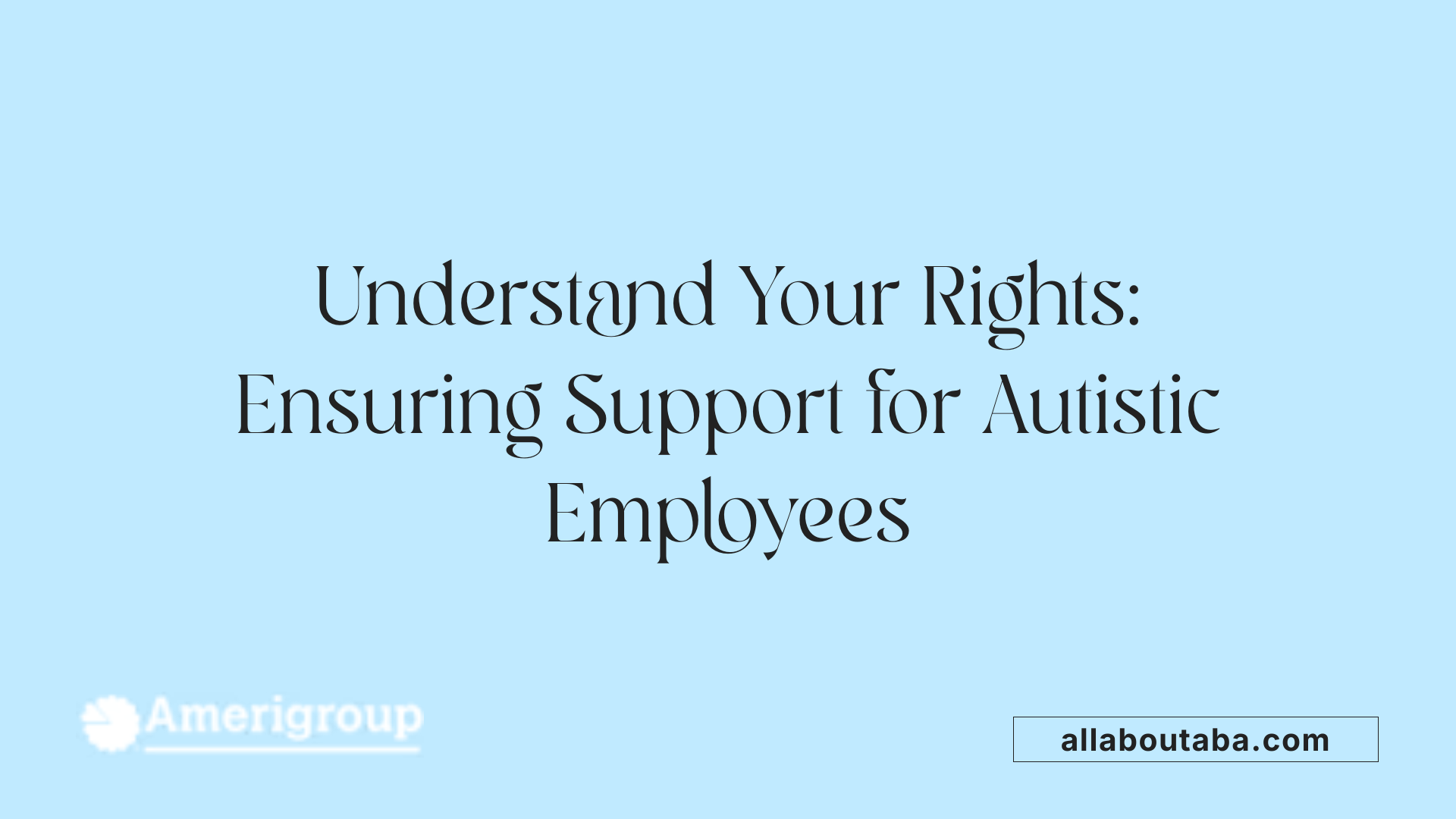Creating an Inclusive Remote Work Environment for Autistic Employees
Remote work offers unique advantages for autistic employees, such as minimized sensory overload, flexible schedules, and tailored environments. To harness these benefits and foster an inclusive, supportive atmosphere, organizations need to implement strategic accommodations, promote understanding, and develop robust support mechanisms that address the diverse needs of neurodiverse employees.
Establishing Sensory-Friendly Workspaces at Home

Choosing a quiet area
A fundamental step in creating a sensory-friendly workspace is selecting a quiet room or corner in the home. Such an area minimizes external noise and distractions, supporting concentration and reducing sensory overload for autistic employees. Ideally, this space should be away from high-traffic zones, with the ability to control ambient noise levels.
Personalizing the space with familiar objects
Adding familiar items such as personal photos, soft furnishings, or comfort objects can make the workspace more welcoming and soothing. Personal touches create a sense of familiarity and control, which can alleviate stress and promote emotional well-being during working hours.
Using noise-cancelling headphones
Noise-cancelling headphones are invaluable tools in sensory-friendly work environments. They help block out extraneous sounds, enabling employees to focus better and maintain a calm mental state. This assistance is particularly beneficial during busy periods or when multitasking.
Soft lighting and ergonomic furniture
Harsh lighting can induce discomfort and sensory overload. Soft, adjustable lighting—such as LED lamps with dimming features—can foster a calm environment. Pairing this with ergonomic furniture reduces physical discomfort and supports sustained focus, all contributing to a healthier and more comfortable workspace.
| Accommodation Type | Implementation Ideas | Benefits |
|---|---|---|
| Quiet area | Designate a low-noise corner | Reduces sensory input, improves concentration |
| Familiar objects | Add personal or comforting items | Enhances emotional comfort |
| Noise-cancelling devices | Use headphones during work | Minimizes auditory distractions |
| Lighting and furniture | Soft lighting and ergonomic setup | Supports sensory regulation and physical comfort |
Creating a sensory-friendly workspace at home involves thoughtful adjustments that cater to individual sensory needs. Implementing these accommodations empowers autistic employees to perform at their best, fostering inclusivity and well-being in remote work environments.
Implementing Structured Routines and Visual Tools
Supporting autistic employees in remote work settings involves creating a predictable and organized environment. One effective approach is establishing daily schedules that outline work tasks, breaks, and downtime, which helps provide structure and reduces anxiety. Maintaining regular sleep patterns is equally important, as consistency can improve overall focus and well-being.
Using visual schedules and to-do lists, such as digital calendars, bullet journals, or sticky notes, allows employees to plan and organize tasks clearly. These tools help keep track of work responsibilities and deadlines, offering a sense of control and reducing overwhelm. Employing reminder systems through notifications or alarms can further assist in maintaining routine and meeting deadlines.
Employers can support neurodivergent team members by promoting the use of visual tools tailored to individual needs. For example, digital tools like Trello or Asana can be customized with visual cues, while physical aids like color-coded charts or laminated schedules can be used at home.
To facilitate understanding and cooperation, organizations should also invest in educational initiatives about neurodiversity. Training sessions that explain various conditions, promote acceptance, and teach inclusive practices foster a supportive culture. Open conversations about individual preferences and needs help tailor work environments that maximize productivity and comfort.
In conclusion, integrating structured routines and visual tools in remote work arrangements not only benefits autistic employees but also enhances overall team clarity and efficiency. By combining these strategies with ongoing education and open communication, organizations can cultivate an inclusive environment where all employees thrive.
Promoting Open Communication and Inclusive Culture
 Supporting neurodiverse and autistic employees in remote work settings hinges on establishing open lines of communication and fostering a culture of acceptance. A fundamental step is addressing individual needs through personalized adjustments, such as flexible work hours, quiet workspaces, and sensory-friendly environments. Incorporating visual schedules, digital calendars, and clear to-do lists can help employees manage tasks effectively, reducing overwhelm and enhancing focus.
Supporting neurodiverse and autistic employees in remote work settings hinges on establishing open lines of communication and fostering a culture of acceptance. A fundamental step is addressing individual needs through personalized adjustments, such as flexible work hours, quiet workspaces, and sensory-friendly environments. Incorporating visual schedules, digital calendars, and clear to-do lists can help employees manage tasks effectively, reducing overwhelm and enhancing focus.
Regular check-ins—whether through one-on-one meetings or informal conversations—are vital for monitoring well-being and providing ongoing support. These interactions create a space for employees to share updates, challenges, and successes, ensuring that support remains tailored and responsive.
Encouraging feedback and dialogue among team members fosters transparency, reduces misunderstandings, and promotes a collaborative atmosphere. Using indirect electronic communications like emails and chats, paired with clear and concise language, helps neurodiverse employees engage comfortably and with confidence.
Creating a culture of acceptance involves educating staff about neurodiversity through training programs that highlight different neurological conditions, their strengths, and suitable accommodations. When colleagues understand the diversity of working styles and needs, stigma diminishes, and support becomes embedded in everyday teamwork.
Overall, by combining tailored support, regular emotional check-ins, and continuous education, organizations can cultivate an inclusive environment where all employees, especially those on the autism spectrum, can thrive. For further insights, exploring “Inclusive communication practices for remote neurodiverse teams” can provide effective strategies to reinforce these efforts.
Flexible Work Arrangements and Clear Boundaries

What accommodations can be implemented to support neurodiverse employees working remotely?
Organizations can make several adjustments to create a supportive remote work environment for neurodiverse employees. Offering flexible work hours allows employees to work when they feel most effective, reducing stress and sensory overload. Providing a designated quiet or sensory-friendly space at home, equipped with noise-canceling headphones and soft lighting, helps manage sensory sensitivities.
Clear and concise written instructions, coupled with organizational tools like digital calendars, to-do lists, and reminders, improve task management and reduce anxiety about deadlines or unstructured work. Assistive technologies, such as specialized software or ergonomic furniture, further support individual needs. These accommodations foster a more inclusive and productive remote work space.
How can the remote work experience be improved for autistic employees?
Enhancing the remote work experience for autistic employees involves delivering clear expectations and consistent, transparent communication. Providing tailored resources that address sensory and communication preferences can make a significant difference.
Creating a sensory-friendly environment at home—such as access to quiet spaces, adjustable lighting, and noise-canceling tools—can improve comfort and focus. Flexible scheduling options and hybrid models of work can help balance sensory needs with social interactions and collaboration, ensuring that autistic employees feel supported and engaged.
Setting boundaries for autistic remote workers and preventing burnout
Setting explicit boundaries for work hours and personal time is essential to protect mental health and prevent burnout. Clear guidelines about when work begins and ends help establish a routine and ensure employees have time to rest and recharge.
Employers should encourage regular breaks and respect the employee’s time outside of work hours, promoting a healthy work-life balance. Establishing these boundaries, along with ongoing emotional check-ins and access to mental health resources, creates a stable environment where autistic employees can thrive professionally while safeguarding their wellbeing.
Leveraging Technology for Better Support and Collaboration
 In remote work environments, technology plays a crucial role in supporting neurodiverse employees, including those on the autism spectrum. Communication platforms such as Slack, Microsoft Teams, and similar tools enable seamless, asynchronous communication, allowing employees to engage without the pressure of live interactions. These platforms support rich messaging, file sharing, and real-time discussions, fostering connectedness while accommodating individual comfort levels.
In remote work environments, technology plays a crucial role in supporting neurodiverse employees, including those on the autism spectrum. Communication platforms such as Slack, Microsoft Teams, and similar tools enable seamless, asynchronous communication, allowing employees to engage without the pressure of live interactions. These platforms support rich messaging, file sharing, and real-time discussions, fostering connectedness while accommodating individual comfort levels.
Assistive technologies further enhance remote work by offering solutions like speech-to-text software and captioning. These tools help employees manage information processing or verbal communication challenges, providing clearer expression and understanding. For example, speech recognition applications convert spoken words into written text, reducing the effort of typing or composing messages.
Recordings of meetings and discussions can be invaluable for autistic employees who prefer to process information at their own pace. Having access to recorded video calls or written summaries allows workers to review details thoroughly and reduces the stress associated with live, in-the-moment interactions.
Project management tools such as Asana, Trello, or Jira help organize tasks, set deadlines, and monitor progress. These digital platforms provide visual cues and structured frameworks beneficial for employees who thrive on routine and predictability. Breaking projects into smaller steps within these tools supports better focus and task completion.
Resources and tips for supporting autistic employees in remote work are widely available. Organizations like Uptimize and Orion Kelly offer specialized training, downloadable tip sheets, infographics, and research-based strategies. These materials highlight the importance of sensory-friendly equipment, flexible scheduling, visual supports, and clear, concise communication.
Best practices for inclusive strategies include providing assistive technologies, flexible hours, and promoting understanding through neurodiversity training. Cultivating a culture of openness—where employees can freely share their needs and preferences—builds a supportive, stigma-free environment.
Overall, utilizing modern technology not only bridges communication gaps but also creates an accessible, accommodating workspace that recognizes and respects neurodiverse workstyles, leading to improved productivity, wellbeing, and inclusion.
Legal Rights and Accommodations Support Systems

What rights do autistic employees have to support at work?
Autistic employees are entitled to various supports and adjustments that help them perform effectively and comfortably in the workplace. These include tailored communication methods, sensory accommodations like noise-canceling headphones or softer lighting, flexible working hours, and workload management strategies that prevent overwhelm.
In the UK, employers are legally required under equality law to prevent employees with autism from experiencing substantial disadvantages. This obligation means they must consider reasonable adjustments tailored to the individual's needs.
Disclosing autism to employers isn't always mandatory but can be necessary to access certain supports and accommodations. Some modifications can be implemented without disclosure if managers observe specific needs, but open communication often facilitates better support.
What government schemes support employment for autistic workers?
The Access to Work scheme is a vital government-funded program aiming to reduce barriers faced by autistic employees and others with disabilities. It provides practical support such as funding for support workers, specialized equipment, and assistance with travel.
To qualify for the scheme, applicants must be over 16 years old, have a diagnosis of autism or another disabling condition that impacts their ability to work, and be currently employed, about to start a new job, or returning to work. Access to Work helps promote inclusive employment by ensuring necessary supports are available, thus enabling more autistic individuals to thrive in the workplace.
| Support Aspect | Description | Additional Details |
|---|---|---|
| Reasonable adjustments | Includes sensory modifications, flexible hours, and communication adaptations | Legally mandated in the UK under equality law |
| Disclosing autism | Facilitates access to tailored support | Not always necessary but often beneficial |
| Access to Work scheme | Funding for support resources | Targeted at those with diagnosed disabilities over 16 |
| Legal responsibilities | Employers must prevent disadvantage | Ensuring a fair, inclusive, and supportive work environment |
This framework of rights and support programs underscores efforts to create more inclusive, autism-friendly workplaces. Providing proper support not only benefits individual employees but enhances organizational diversity and innovation.
Building an Inclusive Organizational Culture and Support Framework
How can employers educate staff on neurodiversity and inclusive practices?
Employers play a vital role in fostering an inclusive environment by providing comprehensive neurodiversity awareness training. These sessions should cover various neurodivergent conditions such as autism, ADHD, dyslexia, and sensory processing disorder, highlighting both the challenges and strengths associated with each.
Creating a culture of curiosity and acceptance is crucial. This involves encouraging open dialogue, reducing stigma, and promoting understanding among team members. When staff are informed about neurodiversity, they are better equipped to support colleagues effectively and contribute to a positive, inclusive workplace.
Initiatives to support neurodiversity in the workplace
Employers can implement several strategies to build a supportive environment, including:
| Initiative | Description | Impact |
|---|---|---|
| Employee Resource Groups | Establish groups focused on neurodiversity to share experiences, provide peer support, and advise management. | Enhances community feeling and ensures employees' voices are heard. |
| Mentorship Programs | Pair neurodiverse employees with mentors trained in neurodiversity awareness. | Facilitates personalized support, career development, and confidence. |
| Inclusive Training | Offer ongoing training for all employees and management about inclusive practices and accommodations. | Promotes a culture of continuous learning and acceptance. |
| Visible Policies and Resources | Develop clear policies on accommodations and provide access to resources like counseling and flexible work arrangements. | Ensures transparency and accessibility of support. |
Cultivating acceptance and understanding
Encouraging acceptance involves more than policy implementation. It requires integrating neurodiversity into the company's values, celebrating diverse ways of thinking, and valuing individual strengths.
Regular discussions, feedback sessions, and inclusive activities like virtual social events can foster belonging. Supporting neurodiverse employees with tailored adjustments and respecting their unique needs enhances overall organizational strength.
Through dedicated efforts to educate, support, and accept neurodiversity, organizations not only comply with legal responsibilities but also unlock the innovative potential of a diverse workforce.
Fostering an Inclusive Remote Work Environment
Supporting autistic employees effectively in remote settings requires a comprehensive approach that incorporates sensory-friendly environments, structured routines, flexible arrangements, and open communication. Education initiatives and supportive policies foster an accepting culture, empowering neurodiverse employees to excel and contribute their unique strengths. By leveraging inclusive practices, technology, and legal supports, organizations can cultivate a thriving, diverse workforce built on understanding, respect, and ongoing support.
References
- How Autistic Employees Can Effectively Work Remotely ...
- Remote Work Support Needs of Employees with Autism ...
- How to support neurodivergence in the workplace with remote ...
- How to support your neurodivergent employees: Remote ...
- An Employer's Guide to Supporting Workers with Autism
- What support can I get at work as an autistic person?
- How to Support Autistic Workers at Remote Work?







